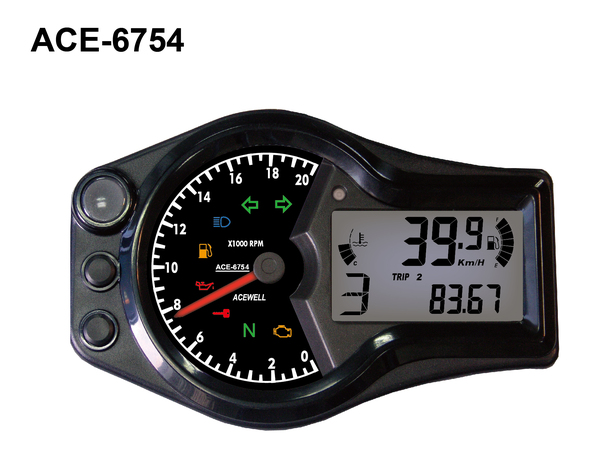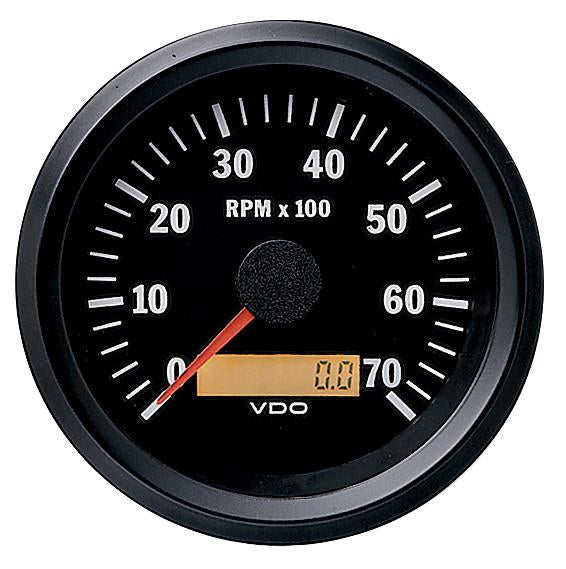Improve Your Driving Experience with a Trustworthy Tachometer
Improve Your Driving Experience with a Trustworthy Tachometer
Blog Article
The Importance of a Tachometer in Monitoring Engine Speed and Performance in Automotive Applications
In the realm of automotive engineering, the tachometer stands as a crucial instrument in the vehicle driver's toolbox, supplying a straight window into the internal workings of an automobile's engine. Past its function as a mere scale of changes per minute (RPM), the tachometer works as an essential device for fanatics and experts alike, offering real-time insights right into engine efficiency and health. Comprehending the value of this device exceeds surface-level monitorings, diving into the elaborate connection in between engine rate, power output, and general driving experience. As we discover the multifaceted role of the tachometer in automobile applications, a much deeper admiration for its impact on car dynamics and performance starts to emerge.
Relevance of Monitoring Engine RPM
Monitoring engine RPM, or revolutions per min, is a critical facet of auto upkeep and efficiency examination. Engine RPM directly correlates with the rate at which the engine's crankshaft revolves, indicating exactly how rapidly the engine is running - tachometer. By keeping track of RPM, mechanics can assess the wellness of the engine, identify prospective concerns, and fine-tune performance. An unusual RPM analysis might indicate problems such as engine misfires, damaged ignition system, or issues with the fuel distribution system. Constantly high RPM readings can suggest aggressive driving behaviors or the demand for a greater gear change to improve gas effectiveness.
Furthermore, keeping track of engine RPM is crucial for performance assessment in racing and high-performance automobiles. In recap, keeping track of engine RPM is not just essential for spotting problems however additionally for maximizing engine performance in different vehicle applications.

Benefits of Real-Time Data
In vehicle applications, real-time data plays a vital duty in giving instantaneous understandings right into the efficiency and problem of the vehicle. By continuously keeping track of various parameters such as engine speed, temperature, gas intake, and more, real-time data offers numerous benefits that add to boosted performance and security when driving.
In addition, real-time data facilitates efficiency optimization by providing instant feedback on driving behaviors and engine effectiveness. Drivers can change their behavior in real-time based Web Site on this info to achieve much better gas economic climate and lengthen the lifespan of their automobile.

In addition, real-time data plays an essential role in contemporary auto diagnostics, allowing professionals to rapidly detect and address malfunctions. This brings about decreased downtime, reduced maintenance expenses, and inevitably, improved general automobile integrity and longevity (tachometer). By using the power of real-time data, vehicle stakeholders can make enlightened choices that favorably impact both the performance and long life of the automobile
Influence On Equipment Shifts
Reliable equipment changes in automotive applications considerably influence general performance and driving experience. The tachometer plays a vital duty in maximizing equipment changes by providing real-time engine speed data to the chauffeur. When coming close to the redline on the tachometer, it signifies the driver to upshift to avoid over-revving the engine and causing potential damage. On the other hand, downshifting at the right moment can help maintain the engine in its power band, guaranteeing see this here responsive acceleration when needed.
In addition, the tachometer help in accomplishing smoother equipment changes, particularly in manual transmissions. By checking engine speed, chauffeurs can perform equipment shifts at the optimal RPM array, minimizing jerking motions and minimizing endure the transmission elements. This precision on duty changes not just improves driving comfort yet likewise adds to sustain performance.
Enhancing Fuel Efficiency
Offered the important function the tachometer plays in optimizing equipment shifts for performance and engine wellness, it directly adds to maximizing gas efficiency in auto applications. By offering real-time responses on engine rate, the tachometer helps vehicle drivers in preserving the most effective RPM array for fuel economic situation. When motorists continually keep an eye on the tachometer and adjust their motoring behaviors appropriately, they can stay clear of unnecessary gas consumption brought on by over-revving or carrying the engine.
In addition, the tachometer helps drivers identify the most fuel-efficient gear to be in at any provided moment, preventing the engine from working harder than required. In conclusion, the tachometer serves as a beneficial device in boosting fuel effectiveness by advertising optimal driving habits and recognizing locations for renovation in the vehicle's efficiency.

Making Best Use Of Engine Long Life
The tachometer's function in monitoring engine speed and efficiency is important in making certain the durability of auto engines. Checking the tachometer enables vehicle drivers to stay within the suggested RPM range for their automobile, preventing unnecessary pressure on the engine and prolonging its lifespan.

Final Thought
To conclude, the tachometer plays a critical function in monitoring engine rate and efficiency in automotive applications. By supplying real-time data on RPM, it enables efficient equipment changes, enhanced gas efficiency, and made best use of engine durability. This tool is crucial for maintaining ideal engine efficiency and guaranteeing the total functionality of an automobile.
Report this page